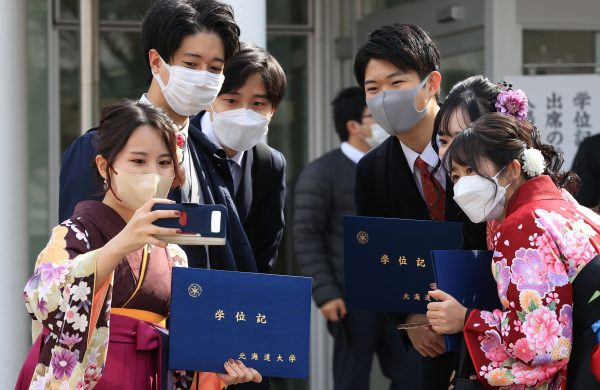The social burden of education costs is an urgent issue that must be resolved in order to halt Japan’s falling birth rate and pursue economic development. According to a survey by the National Institute of Population and Social Security Research, the high cost of education is the most frequently cited reason for families choosing not to have their desired number of children.
The lifetime employment system, which supported economic development during Japan’s high-growth period in the 20th century, has become a privilege granted to a limited number of elite workers. Part-time employment levels are on the rise and one in three new graduates are leaving the workforce within three years. Scholarships have become widely needed not only for low-income groups, such as tax-exempt households, but for middle-income groups as well.
Article 26 of the Japanese Constitution stipulates that all people have the right to receive an equal education correspondent to their ability. The Fundamental Law of Education also stipulates that national and local governments must take measures to provide financial assistance to those who face economic barriers to receiving an education.
But Japan reserved the right not to be bound by the provisions in Article 13(2)(c) of the International Covenant on Economic, Social and Cultural Rights regarding equal access to education and the progressive introduction of free education. Though the Japanese government withdrew its reservation in 2012, stating that higher education would be made equally accessible to all, free higher education in Japan remains a remote possibility.
The Abe government’s 2017 New Economic Policy Package introduced a grant-type scholarship and an income-linked refundable scholarship system. But the support measures were limited to low-income households and were designed to support students at ‘universities and other institutions that strike a balance between academic pursuits and practical education, taking into account the needs of society and industry’. Strict requirements for higher education institutions were put in place, including the recruitment of teachers with practical experience outside academia and the implementation and publication of performance management evaluations.
Japanese Prime Minister Fumio Kishida stated in September 2021 that ‘we will develop an environment where those who want to learn can study at universities and other institutions’, referring to the government’s intention to create a loan system that takes inspiration from Australia’s Higher Education Contribution System.
But at the Conference on Creating the Future of Education in May 2022, it was announced that at the undergraduate level, non-repayment scholarships for low-income students would only be extended to households with multiple children and science and engineering students. An income-contingent loan and repayment system — the Shusse Barai scholarship — is set to be introduced for postgraduate students.
This provision of financial support for families with multiple children is consistent with pre-existing government measures in place to combat low fertility. Favouring students in STEM fields is justified since the Japanese government aims to have 50 per cent of tertiary students majoring in the natural sciences, the highest level among OECD countries. Currently about 35 per cent of students undertake study in these fields in Japan, compared with an average of 27 per cent in OECD countries.
The income-contingent loan is only available for master’s students, but starting in 2024, these loans may be expanded to undergraduate students. While support for master’s students has been slow to materialise, it is mainly students in STEM fields who undertake master’s programs in Japan — 42.3 per cent of students who graduate with a bachelor’s degree in science enter master’s programs, compared to 2.3 per cent in social sciences and 4.4 per cent in humanities.
As a result of the conditions that accompany these loans, not all students have access to tertiary education. Low-income students who cannot enter universities that are not recognised by the state as offering ‘a good balance between academic pursuits and practical education’ are ignored. The limited employment opportunities for individuals with a postgraduate degree in the humanities and social sciences also constitute a significant problem.
The implementation of policies that aim to reduce the financial burden placed on tertiary students and efforts to make higher education free in Japan are insufficient as the loans primarily support government-authenticated universities and the bright students who can go there. This is not only a matter of limited government support for the education sector, but also stems from the belief that society is the key beneficiary of higher education and that support for individuals is justified only if it contributes to Japanese society.
Sae Shimauchi is Associate Professor at the International Centre at Tokyo Metropolitan University.

